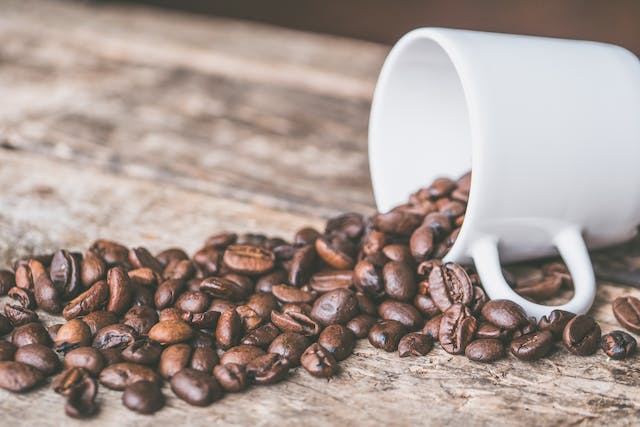Even if you don’t start your morning with a cup of aroma coffee, the chances are high that you know at least one person who is obsessed with it. Such people drink coffee and read everything they can find on the web about it. For example, it can be a cheap coffee makers review, unusual recipes, and DIY ideas with coffee beans. Nonetheless, despite such a popularity of the drink, many people don’t know how to choose top-quality coffee. And there is no single standard that could help you meet this challenge. Coffee admirers can rely only on the brand, the packaging, the coffee’s freshness, and their preferences. However, if you want to broaden your horizons in this regard, it is worth starting with coffee quality criteria, which professionals are guided by. And it is about coffee beans in the first place since they affect the taste of your coffee drink.
Production process
Coffee is made from coffee beans. Each bean comes a long way before you get it, and its quality depends on each stage of the path. First, they separate the coffee pulp, then they wash beans, dry them, remove glume, and sort. When all beans are sorted, they distribute them into bags for storage and assign a classification. The latter will affect the future price of beans. The higher the category of beans is, the better they taste. The same plantation can produce high-grade and low-grade beans, which are used to make instant or cheap commercial coffee.
Classification of coffee beans by type
Even though there are more than sixty different types of coffee beans, there are only four key ones. Usually, the type of coffee beans is indicated on the package. You can also run into a percentage concentration of different types of coffee beans in the same package.
Arabica
It makes up about 70% of all world coffee production. This type of coffee has a pronounced taste and aroma, which is fully revealed during the roasting process. Arabica surpasses other types in terms of export volume and consumption demand.
Robusta
It is the second-largest cultivated and consumed type of coffee. Robusta beans have a pronounced bitter taste since they contain a large amount of caffeine. Therefore, Robusta is not used in its pure form but a mixture with Arabica. Robusta is generally much cheaper than Arabica. Robusta gives the drink density, uniform foam (cream), and increased caffeine content. Vietnam is the largest exporter of Robusta.
Liberica
If there was a beauty pageant among coffee trees, then Liberica could get the winner’s crown. Liberica trees grow only north of the equator. This type of coffee produces low harvests but is resistant to diseases. Anyway, it is not in high demand because of a bitter aftertaste. It contains a small amount of caffeine but has a rich coffee aroma. Therefore, it is widely used in confectionery. This aromatic coffee is used in coffee blends.
Excelsa
This coffee tree is not afraid of adverse weather conditions and is resistant to disease. The taste and aroma of coffee are rich. It is the only type of coffee that could compete with Arabica. However, its flowering is unpredictable, and the harvest is low. Excelsa beans are used in combination with Arabica and belong to an expensive elite coffee.
Classification of coffee beans by area
The taste of coffee greatly depends on the area of its production and the quality of the ground. That’s one of the reasons why coffee beans from certain areas can cost a pretty penny compared to some other spots.
African continent
Ethiopian coffee is associated with a complex and rich taste that has high acidity. Mountain slopes and rainforests are ideal conditions for growing coffee. The share of Ethiopian coffee is about 3% in the world market. Typica can be considered the best Ethiopian coffee, thanks to its specific sweet taste. Kenyan coffee has a deep sweet taste with fruity and berry notes and a light wine aftertaste. The coffee plantations are located on mountain volcanic soils. They have time to absorb the fullness of its taste and aroma. Kenya is a major exporter of Arabica.
South America
This continent is the leader in the supply of coffee beans to the world market. A feature of Brazilian coffee is that coffee trees grow on flat plantations with an unstable climate, in unusual conditions for coffee. Despite this, Brazil exports 35% of the global coffee market and ranks first among the producing countries. Colombia is the third-largest Arabica coffee exporter in the world. Peru supplies 3% of the international coffee bean market.
Central America
Coffee from Honduras tastes different depending on the province. Coffee trees are grown next to other fruit and berry plants on local plantations, giving the coffee a special taste and aroma. Honduras is among the top six coffee exporting countries. Mexico ranks 9th among the countries that supply coffee to the world market. The main coffee types have a light taste with a pronounced sourness and chocolate aftertaste. Guatemala is renowned for its variety of coffee flavors.
Asia
The share of coffee beans from Vietnam is 20% of world exports. Vietnamese coffee is strong and aromatic since it is mainly about Robusta. Indian coffee has spicy notes of cloves, cardamom, nutmeg, and other spices. India exports about 5% of the world’s coffee. Indonesia ranks 4th in the ranking of countries in terms of coffee production. The main type is Robusta.

